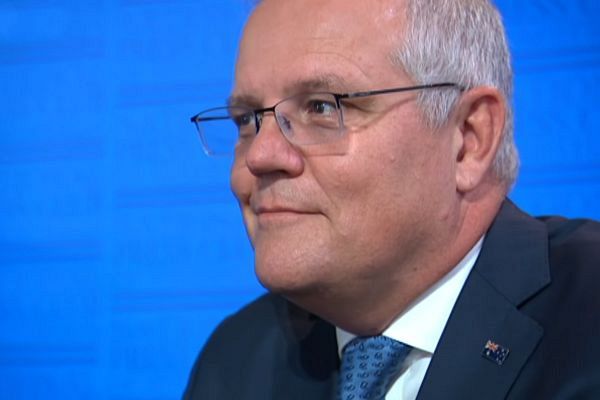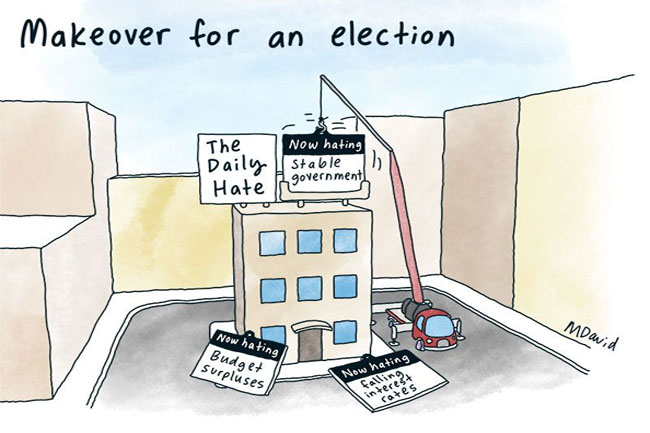The submarine deal France proudly called 'the contract of the Century' appears to have collapsed, reports Alan Austin.
IF THERE WAS one thing which should unite all media commentators, economic and military analysts, and informed citizens in outrage against the Morrison Government, it is this. The Government has wasted billions of dollars on a deal to buy 12 new submarines which have virtually no chance of fulfilment.
As this is written, the head of the French naval construction company Naval Group, Pierre Eric Pommellet, is in Australia meeting federal ministers in an attempt to rescue the contract. Tragically for Australia – and for Monsieur Pommellet – not one of those ministers has the experience or competence to wrangle a successful result.
Many informed commentators in France, Australia and elsewhere now expect the much-celebrated deal to be abandoned. If that happens, replacing the current ageing submarines would be delayed many years, depending on the timing of the change of government to a capable administration.
Although defence is just one example of Coalition mismanagement, this is where Australia’s losses are arguably most devastating: both in billions of dollars wasted and in the risk to national security.
Responsibility for the project
Multiple failures are evident. The most basic is accountability. Since negotiations with France began, Australia has had three prime ministers, three deputy PMs, three failed treasurers, five defence ministers and four ministers for defence industry. Of the 15 individuals to have held these portfolios, seven have left the Parliament. None remaining has the competence to deliver for Australia or the mettle to take responsibility. The current Defence Minister is in hospital on leave.
Political priorities paramount
A major factor in dashing into the connection with France was the set of promises the Coalition hoped to make chasing votes. In the run-up to the 2019 election, then Minister for Defence Industry Christopher Pyne promised hundreds of new jobs, the “majority of which will be based in South Australia".
Cost and defence considerations were secondary.
Many military observers were dismayed at Australia taking the French Shortfin Barracudas over the lower-cost and more suitable alternatives tendered by Japan and Germany.
Design and cost errors
Several of Australia’s specifications were plain foolish, as Binoy Kampmark summarised for IA. A nuclear submarine with a diesel-electric engine is a fail. An American combat system won’t work in a French vessel because the Americans and the French do not talk. Lead-acid batteries will be obsolete well before the subs are delivered.
France’s original tender documents put the cost of the project at between $20 billion and $25 billion. The cost in the initial agreement signed in late 2016 was $50 billion.
By February 2020, the Parliamentary Library research service reported that the acquisition cost:
‘... is in the order of $80 billion in out-turned dollars and the estimate for sustainment might roughly work out to be around $145 billion ...’
Today, estimates range up to double that quantum.
Missed deadlines
Delays so far have pushed back delivery of the first Barracuda from the mid-2020s to the early 2030s and now to the 2040s. The latest missed date was finalising the critical Strategic Partnering Agreement which governs the entire project. This was due before last Christmas.
Australian content in labour and components
This is the main area of contestation between the French company and the Morrison ministry. The Defence Minister is holding out for 60 per cent local input, down from 90 per cent when the project was first announced. The French now insist it must be much less as Australia cannot deliver. This was not settled before the production agreement was signed in 2018.
How many subs are needed?
Replacing the current six Collins-class vessels is certainly justifiable and possibly increasing that to seven or eight.
Comparisons with other countries suggest 12 is excessive.
Taiwan with a similar population to Australia’s and much greater defence vulnerability has four. Canada with a much higher population also has four. Argentina and Spain with roughly twice Australia’s population each have two. Germany which has a population more than three times Australia’s and is a major submarine manufacturer has six. Brazil with eight times the population has six. Mexico with five times the population has none. New Zealand with arguably the same defence vulnerability as Australia has none.
Twelve is thus excessive, especially as this Government has borrowed $73 billion on average each year for the past seven years – a total debt blow-out of $541 billion – while all well-managed economies have substantially reduced their debt.
Failure to invest in Australia
There is one justification for 12 subs. That is if Australia expands its own submarine industry and builds them for other countries as well. If Sweden with less than half Australia’s population can do this, Australia certainly can. Not many, however, believes the current Coalition Government has either the vision or the competence to attempt this.
The current Collins-class submarines were commissioned by the Hawke Government in 1987. Construction began in Australia in 1990 and continued until 2003. The technical problems encountered in the early years were gradually overcome. The six subs will now remain in service until the mid-2040s, subject, of course, to when the Coalition loses office.
A proficient administration can do it.
Excessive secrecy, even from the Senate
Compounding all these failures is Morrison’s Cabinet refusing to be answerable to the Parliament. In an ugly confrontation in last month’s Senate Economics References Committee, Defence Department head Greg Moriarty refused point-blank to provide documents which the Committee had the constitutional right to access.
Independent Senator Rex Patrick warned Moriarty:
“There has been an order for the production of these documents. You have advanced public interest immunity and you are quite entitled to do that. The Senate considered that public interest immunity and, in this instance, has rejected it. From that point on, you are basically verging on contempt. The Minister is verging on contempt.”
Moriarty steadfastly refused the Committee’s requests, insisting he would do the bidding of the craven Minister and Cabinet.
The remedy
Thus the solution is for the people of Australia to get rid of this secretive bungling regime at the earliest opportunity: to save hundreds of billions of dollars and to ensure effective military capability.
Alan Austin’s defamation matter is nearly over. You can read the latest update here and contribute to the crowd-funding campaign HERE. Alan Austin is an Independent Australia columnist and freelance journalist. You can follow him on Twitter @alanaustin001.
Related Articles
- Australia slides from world’s greatest country to pariah – in just ten years
- Australia lagging behind on electric vehicles and climate action
- Mainstream media roll out pro-Coalition narrative for the election year
- Federal legislation fails to protect wildlife and the environment
- The Morrison Government's program of class warfare
 This work is licensed under a Creative Commons Attribution-NonCommercial-NoDerivs 3.0 Australia License
This work is licensed under a Creative Commons Attribution-NonCommercial-NoDerivs 3.0 Australia License
Support independent journalism Subscribe to IA.















